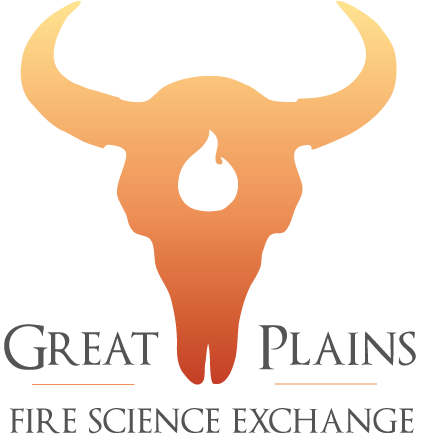K-12 Education
Chris Zou (Oklahoma State University) presents his research at the 7th Fire in eastern Oak Forests Conference in Tyler, Texas. On the Impact of Juniper Encroachment and Removal on Water Quantity/Quality in Water-limited Cross Timbers.
Read MoreThis app serves as a single place where you can receive weather updates and fuel conditions that may lead to severe wildfires, determine expected fire behavior, and also 7-day forecasts in anticipation of severe fire hazard conditions.
https://wildfiresafe.fs.usda.gov/
Read MoreReviews the solutions that are employed to increase prescribed fire use by land managers in the Great Plains.
Read MoreTallgrass Prairie + Oak Savanna Fire Science Consortium, and Great Plains Fire Science Exchange provided a panel over fire across the grassland and answered the question of what are we managing for.
Read MoreThe Canadian Prairies Prescribed Fire Exchange (CPPFE) is an inter-agency collective established to increase knowledge sharing and training surrounding the use of prescribed fire as a management tool in Canadian prairie and parkland ecosystems. We’re here to help fire practitioners of all backgrounds, from landowners, to communities, to conservation groups and even experienced firefighters. We aim to get more fire returned safely and effectively to the prairie by providing learning and training opportunities, facilitating equipment and resource sharing, and acting as a hub for current fire science and grassland fire knowledge.
Read MoreThe Canadian Prairies Prescribed Fire Exchange held the 1st Canadian Prairies TREX from October 15-21, 2022. This event provided an opportunity for partners to gain skills and build capacity, while simultaneously achieving fire management and ecological goals within Saskatoon and the surrounding landscape. It was also an opportunity to build relationships with partners, share knowledge, and work within a more complex organizational structure, utilizing an Incident Command System.
Read MoreTuesday, Aug 23, 2022
Prescribed Burn Association Updates
Fire in the Grassland Regions of North America
The Impact of Prescribed Burn Associations
Analysis of the Fall 2021-2022 NE Fire Season
2022 Fire Weather and Climate Update
Charlatans of the Great Plains Past and Present
Wed, Aug 24
A Ranchers Journey to Prescribed Fire
Fighting Fire with Fire: Coexisting with Fire in the Great Plains
Great Plains: NRCS Prescribed Fire Panel
A Future with Fire
Loess Canyons Biologically Unique Landscape Tour Primer
Breakout sessions
Patch Burn Grazing:
Heterogeneity through pyric herbivory as the basis for rangeland conservation
Creating a Shifting Mosaic without Relying on Fire
Pyric Herbivory Effects on Rangeland Forage Quality and Avoided Grazable Areas
Patch Burn Grazing in Below Rainfall Years
Multi-Species pyric herbivory impacts on woody plant encroachment
Room 2:
Prescribed Fire Lessons Learned
Prescribed Burning Communication Kit
Prescribed Fire Hurdles: Dealing with Naysayers in Land Management
Using Prescribed Fires to mitigate wildfires
Prescribed Fire Needs: Group Discussion
Room 3:
Legal Reviews of Prescribed Burning Regulations
Wildland Fire and Smoke Management
Effects of prescribed burning on butterfly populations in Coastal South Texas
Forage or fuel? How climate shapes long-term fire- herbivore interactions in Great Plains grassland
Addressing eastern redcedar in the Nebraska Sandhills
Safe Burning of Brush Piles: Roundable Discussion
Room 4:
Indian Nations Conservation Alliance
Prescribed burning across boundaries: lessons learned
Prescribed fire programs and resources from Texas
Compressed air foam for prescribed fire
Effects of fire on barbed wire and steel posts
Read MoreWhy burn? Prescribed fire is a safe, effective, and economical way to enhance native rangelands. Learn more about Prescribed Fire’s benefits to nature, livestock, and it’s role in helping reduce wildfire risks.
Read More

